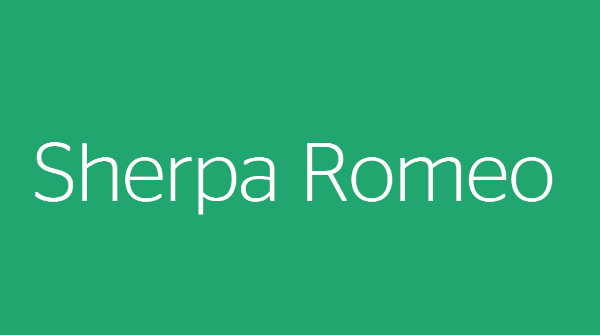Implementación curso virtual de lengua de señas para estudiantes del técnico laboral por competencias de atención a la primera infancia
DOI:
https://doi.org/10.35622/j.ram.2022.01.003Palabras clave:
lengua de señas, diseño curricular, estrategias didácticas, plan de estudios, discapacidad auditivaResumen
En el departamento de Boyacá, específicamente en Tunja, existe el Instituto Cenis de Colombia, el cual lleva 21 años formando profesionales en carreras técnicas ofreciendo el servicio de educación no formal a través de Técnicos laborales por Competencias. En este contexto se presenta la necesidad de fortalecer el currículo brindando una oportunidad de capacitación incluyente el cual le permita a los estudiantes en formación adquirir competencias laborales integrales para abordar a la población con discapacidad, Por medio de esta investigación, vamos a evidenciar la necesidad que presenta la institución en cuanto a la priorización de implementar un curso en Lengua de Señas Colombianas, para que las 70 estudiantes del técnico laboral por competencias de atención a la primera infancia se capaciten y de esta manera se fortalezca el currículo del módulo de inclusión con la implementación del curso virtual de lenguaje de señas; como educadores, debemos enfrentar los retos de la educación del siglo XXI en nuestro país; así que tenemos la posibilidad de diseñar propuestas pedagógicas transformadoras y hacer uso de métodos como la investigación acción participativa, la cual nos permite realizar ejercicios puntuales de inmersión social, indagando e investigando diferentes contextos los cuales presenten necesidades que requieran ser transformados de manera inmediata y al utilizar eficientemente los instrumentos de recolección de la información como las encuestas y entrevistas se puede realizar el análisis crítico de los resultados y ofrecer una propuesta acorde con las necesidades de los estudiantes, así mismo se dará un primer paso para que el instituto cenis pueda convertirse en una institución educativa incluyente e inclusiva, que ofrezca educación de calidad a la población con discapacidad, abriendo las puertas a la innovación y flexibilización curricular.
Referencias
Cabrera, J. (2019). Desarrollo humano e inclusión educativa de los niños y niñas con discapacidad auditiva en la institución educativa San Martín de Tours Sogamoso, Boyacá. [ Tesis de maestría, Universidad de la Salle] Ciencia Unisalle. https://ciencia.lasalle.edu.co/cgi/viewcontent.cgi?article=1157&context=maest_gestion_desarrollo
Cadavid, A. y Calderón, I. (2009). Análisis del concepto enseñanza en las teorías curriculares de Lawrance Stenhouse y José Jimeno Sacristán. Revista Educación y Pedagogía, 16(40), 143-152. https://www.researchgate.net/publication/277216954_Analisis_del_concepto_Ensenanza_en_las_teorias_curriculares_de_Lawrence_Stenhouse_y_Jose_
Decreto 1330 de 2019. (2019, 25 de Julio). Ministerio de Educación Nacional. https://www.mineducacion.gov.co/1759/articles-387348_archivo_pdf.pdf
Gimeno_Sacristan Mottez, B. (1977): A s'obstiner contre les deficiences on augmente souvent le handicap: l'example des sourds, Sociologia et Societè 1,20-32.
Hernández, R. (2014). Metodología de la investigación (Sexta ed.). México, D.F.: McGraw-Hill.
Hernández R., Fernández C. y Baptista P. (2010). Metodología de la Investigación. Sexta edición.
Hoyos et al. (1997) Fundamentos y modelos curriculares. En Hoyos et al. (1997) Educación: Capitulo III currículo y planeación educativa. (pp. 35 – 87). Magisterio
Huertas, M. (2015) Estrategias didácticas para el aprendizaje estratégico. En Huertas, M. (2015) Educación: La estrategia en el aprendizaje. Una guía básica para profesores y estudiantes. (pp. 157 – 171) Magisterio Editorial
Luque, B. (2013). Metodología para la creación de un laboratorio de lengua de señas. Revista scielo.org.ve, 83(38), 81-110.
Mancipe, J. y Osorio, E. (2021). Educación inclusiva para personas en condición de discapacidad en el municipio de Tunja Boyacá. [ Tesis de pregrado, Universidad Santo Tomas] Repositorio de la USTA. https://repository.usta.edu.co/bitstream/handle/11634/34561/2021juliethmancipeerikaosorio.pdf?sequence=1&isAllowed=y
Ministerio de Educación Nacional e Instituto Nacional para Sordos. (2006). Diccionario básico de la lengua de señas colombiana. https://www.ucn.edu.co/e-discapacidad/documents/36317784-diccionario-lengua-de-senas.pdf
Organización Mundial de la Salud. (2021). Sordera y perdida de la audición. https://www.who.int/es/news-room/fact-sheets/detail/deafness-and-hearing-loss
Pérez, M. A. (2008). Currículum integral como trayecto de desarrollo en Abraham Magendzo. Revista Educación y Humanismo, 15, 115-125. http://revistas.unisimon.edu.co/index.php/educacion/article/view/2157/2049
Pico, D. y Betancourt, B. (2015). Talleres pedagógicos para fortalecer la adquisición de la primera lengua a través de cuentos en lengua de señas colombiana en niños y niñas sordos de ciclo I. [Tesis de pregrado, Corporación Universitaria Iberoamericana].
Plan de Estudios. (2021) Ministerio de Educación Nacional. https://www.mineducacion.gov.co/1621/article-79419.html
Sacristán, G. y Pérez. (1995). Comprender y transformar la enseñanza, 4.a ed., Madrid, Morata.
Skliar, C. (1995). Discapacidad – Rehabilitación. Enciclopedia Iberoamericana de Psiquiatria. Editorial Panamericana, Buenos Aires, 1995, Tomo II, 401-406
Vigotsky, L. (1925). "Principios de educación de niños sordos", en ruso -obra inédita en español-.
Villabella, C. M. (2015). Los métodos de la investigación jurídica: algunas precisiones. En W. Godinez y J. H. García, Metodologías, enseñanza e investigación jurídica (págs. 921-953). México
Descargas
Publicado
Número
Sección
Licencia
Derechos de autor 2022 Shirley Rativa, Nelcy Sandoval

Esta obra está bajo una licencia internacional Creative Commons Atribución 4.0.














